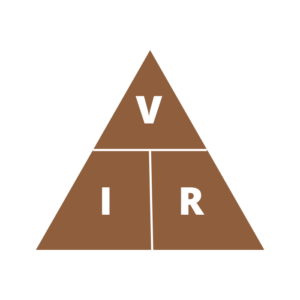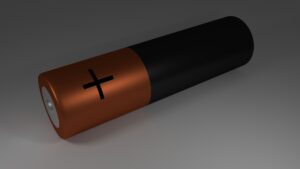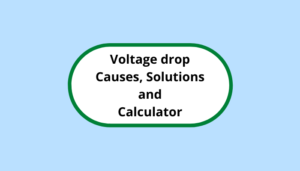KVA stands for Kilo Volt-Ampere, and it is a unit of measurement for apparent power in an electrical circuit.
In this article, we unravel the critical concept of power factor and introduce the KW to KVA converter a powerful tool designed to help businesses and industries streamline their electrical systems and precisely evaluate their power needs.
Table of Contents
KW to KVA formula
In a three-phase electrical system, the apparent power S (measured in kilovolt-amperes or kVA) is related to the real power (measured in kilowatts or kW) and the power factor (PF) by the following formula:
kw to kva formula 3 phase, KVA=KW/PF
Where:
- is the apparent power in kilovolt-amperes.
- kW is the real power in kilowatts.
- PF is the power factor, a dimensionless value between 0 and 1, representing the ratio of real power to apparent power.
To calculate apparent power (kVA) from real power (kW) and power factor (PF), simply divide the real power (kW) by the power factor (PF).
Example KW to KVA:
A load of 50 kw with (PF) of 0.8, convert to (kVA).
As mentioned above S (kVA) = 50 * 0.8 = 40 kVA
Example of Converting KVA to KW:
A load of 100 kva with pf of 0.8, converts from kva to kw.
As mentioned above P (kw) = 100 / 0.8 = 125 kw
What is KVA (Kilo Volt Ampere)
KVA stands for Kilo Volt-Ampere, and it is a unit of measurement for apparent power in an electrical circuit.
Apparent power is a complex quantity that combines both real power (measured in kilowatts or kW) and reactive power (measured in kilovars or kVAR).
Here’s a breakdown of these terms:
-
Active Power (kW): The real power that does useful work, like lighting a bulb or running a motor.
-
Reactive Power (kVAR): Power used to establish electric and magnetic fields in inductive or capacitive loads.
- Apparent Power (kVA): The combination of active and reactive power, calculated as: KVA=KW/PF
Power Factor and Its Role
The ratio of active power (kW) to apparent power (kVA) is called the power factor (PF):
Power Factor = kW/kVA
- A power factor of 1 means all the power is being used effectively.
- A lower power factor indicates inefficiency, with more reactive power.
Why Use KVA?
KVA is used because:
- It represents the total electrical load the system must handle.
- Electrical equipment like transformers and generators are rated in KVA because they must account for both active and reactive power.
Example:
If a transformer is rated for 500 kVA and the system’s power factor is 0.8, the maximum real power it can deliver is:
KW=kVA×PF=500×0.8=400 kW
Kilo volt-ampere is the power rating unit for generators and transformers.
Difference Between kVA and kW
The terms kVA (Kilo Volt Ampere) and kW (Kilowatt) are both units of power used in electrical systems, but they measure different types of power:
kW (Kilowatt): Active Power
- Definition: kW represents the real or active power that is actually used to perform work, such as running motors, lighting, or heating.
- Nature of Power: It is the useful power that directly contributes to accomplishing tasks.
- Formula: kW = kVA × Power Factor (PF)
- Example: If you have a 5 kW motor, it means the motor uses 5 kilowatts of real power to do mechanical work.
kVA (Kilo Volt Ampere): Apparent Power
- Definition: kVA represents the apparent power, which is the total power drawn from the system. It includes both active power (kW) and reactive power (kVAR).
- Nature of Power: Apparent power is a combination of:
- Active Power (kW): Does real work.
- Reactive Power (kVAR): Does no useful work but is needed to maintain voltage and current flow.
- Formula: kVA=kW/Power Factor (PF)
- Example: If a generator is rated at 10 kVA with a power factor of 0.8, it can supply a maximum of 8 kW of active power.
Power Factor (PF): Key Difference
The power factor determines how much of the apparent power (kVA) is converted into active power (kW):
- High Power Factor (close to 1): Most of the power is active.
- Low Power Factor: A significant portion is reactive power, reducing the efficiency.
Key Differences Summary:
| Aspect | kW (Kilowatt) | kVA (Kilo Volt Ampere) |
|---|---|---|
| Type of Power | Active Power (Real Power) | Apparent Power (Total Power) |
| Does Useful Work? | Yes | No, includes both real and reactive power |
| Formula Relation | kW = kVA × PF | kVA = kW / PF |
| Usage | Measures actual energy use | Measures system load capacity |
| Unit Dependency | Dependent on load and efficiency | Independent of power factor |
Why is this Important?
- Generators, transformers, and UPS systems are rated in kVA because they must handle both active and reactive power.
- Billing for electricity is typically based on kW since it reflects the energy used.
Don’t Leave Empty-Handed!
Install my Free Android App on Google Play:
Electrical Cables Most Common Tables “Cables Tables”
And, my Electrical Calculations App “Fast Electrical Calculator”
Discover more great content by subscribing to My channel
Looking to stay ahead of the game in the world of electrical engineering? Subscribe to my YouTube channel and gain access to exclusive content you won’t find anywhere else!
The staff I recommend
(Amazon Affiliate Links to products I believe are high quality):
- Economy 120 Volt/60Hz AC Power Source – Step-Down Voltage & Frequency Converters 1800W
- UNI-T Digital Multimeter Tester UT139C
- 50-Amp Extension Cord for RV “100ft”
- Voltage Stabilizer 110/220v
- Hair Dryer “best selling“
- TOSHIBA EM131A5C-BS Countertop Microwave Ovens
Disclaimer: This contains affiliate links to Amazon products. I may earn a commission for purchases made through these links.





